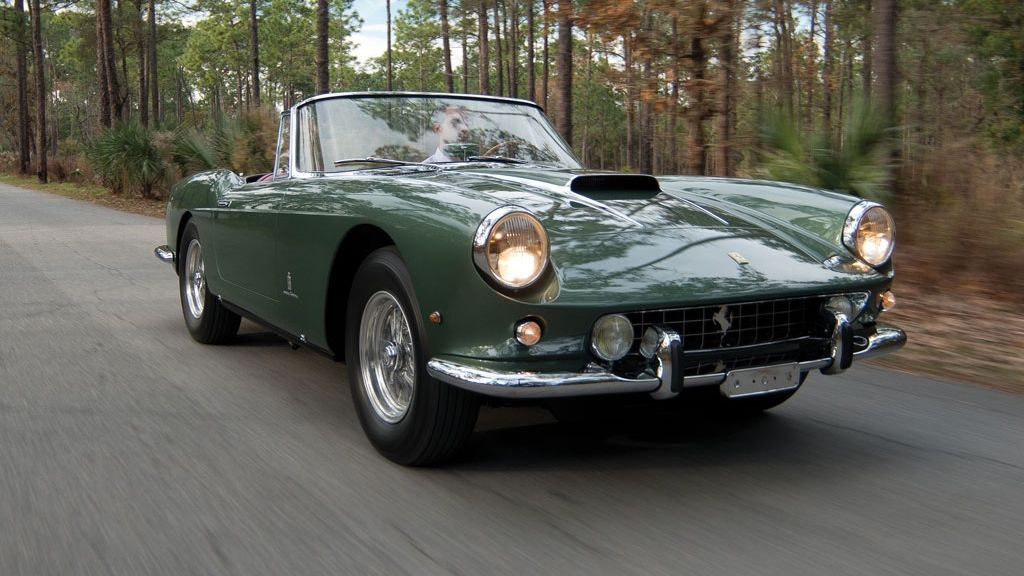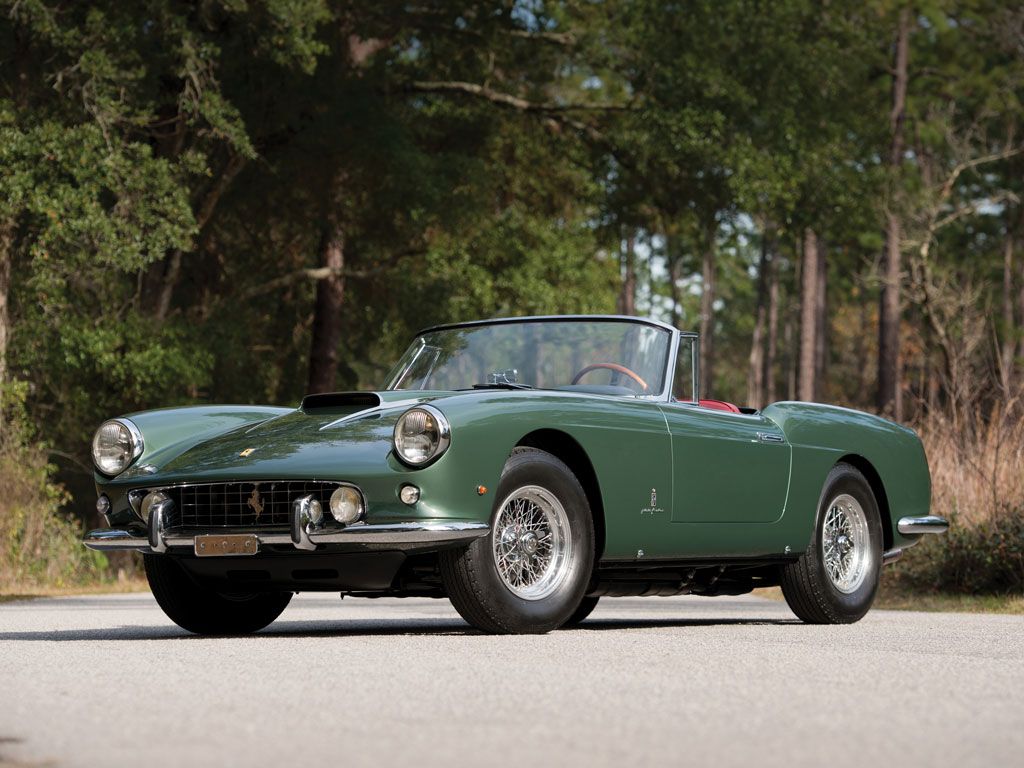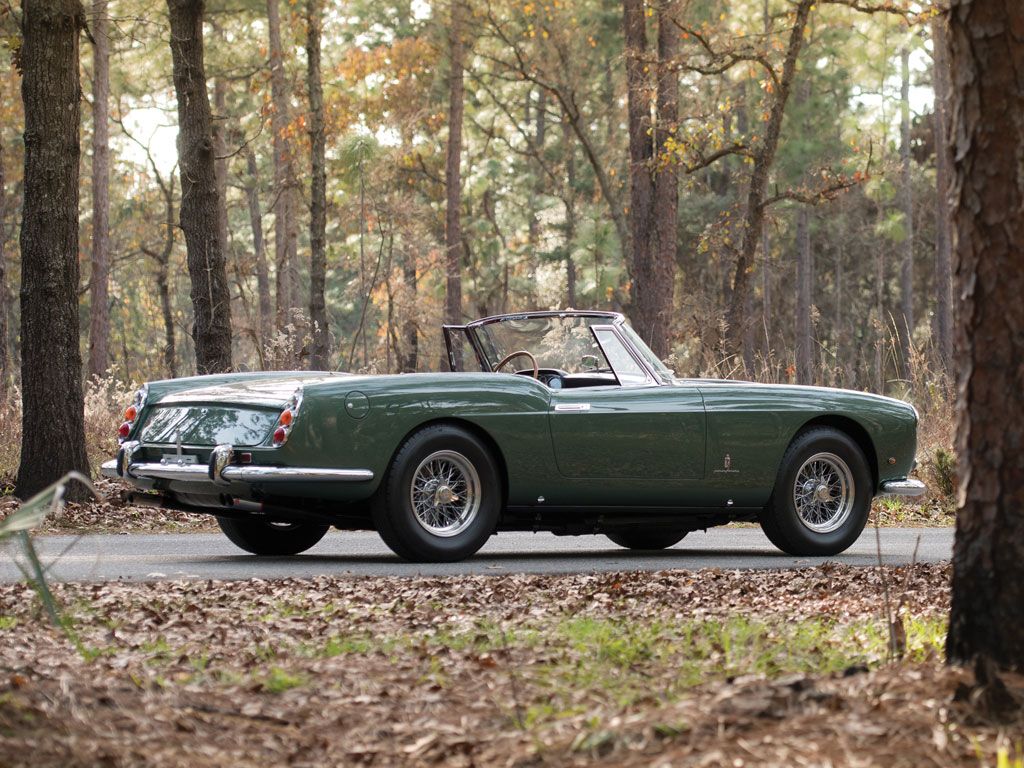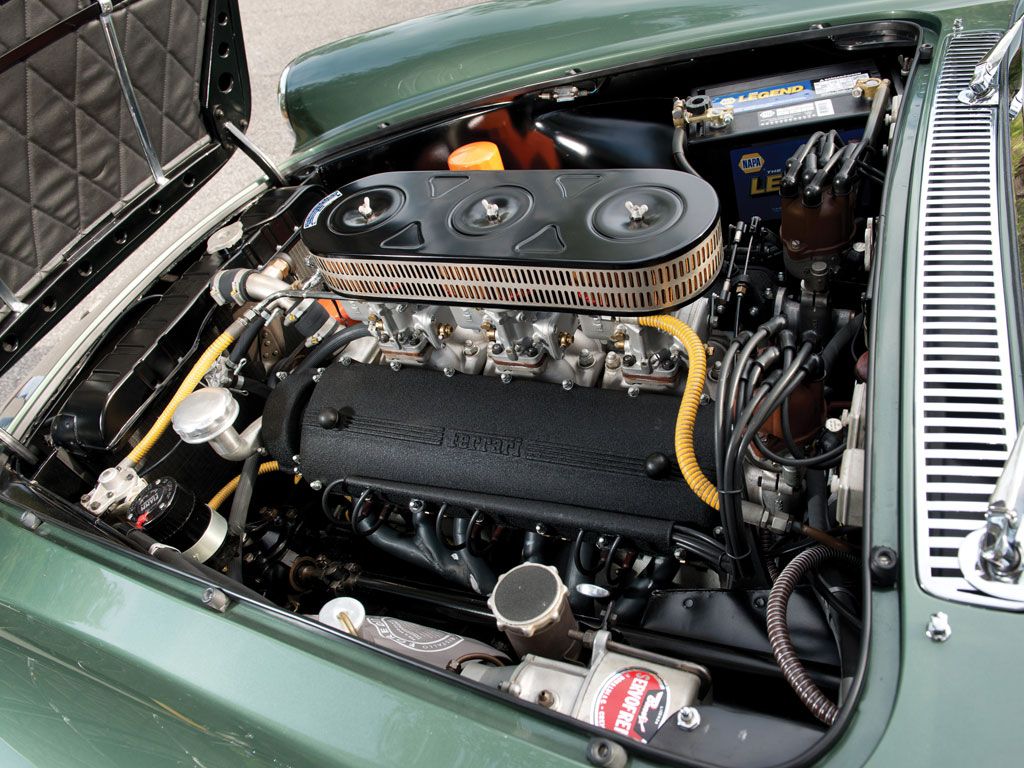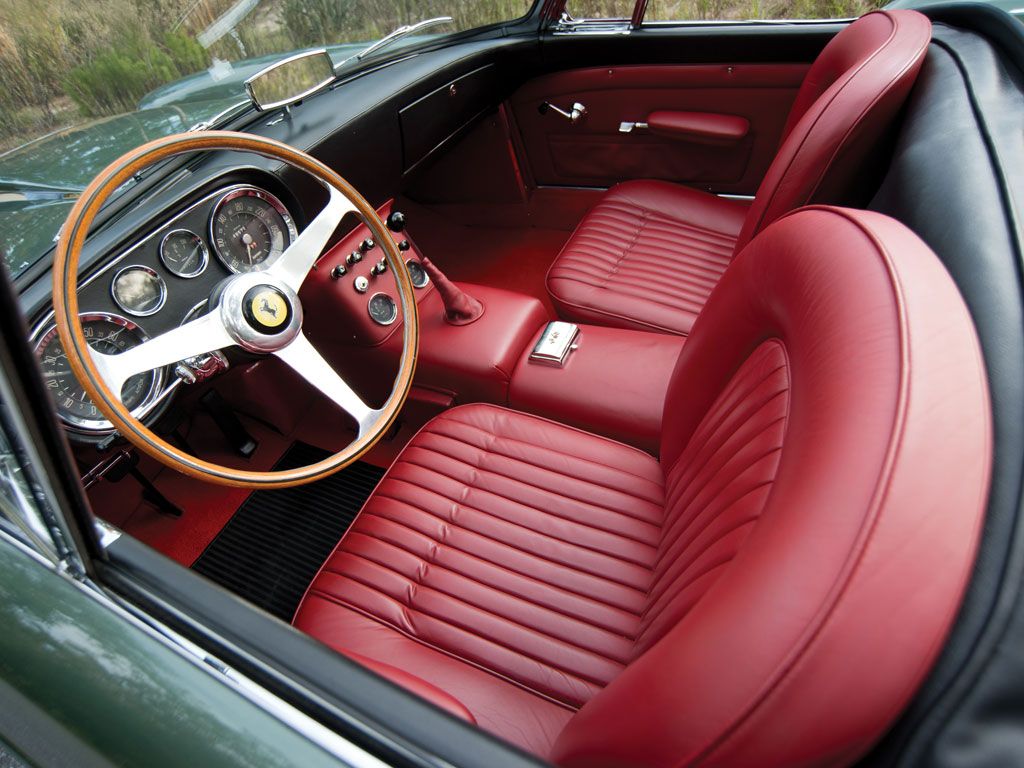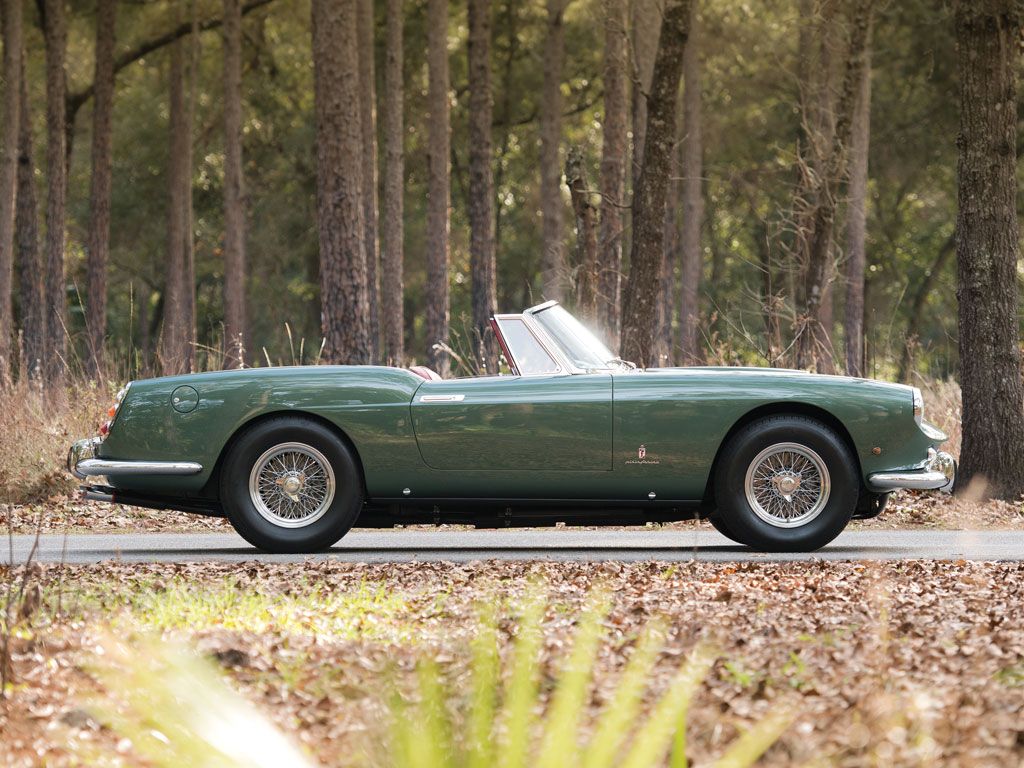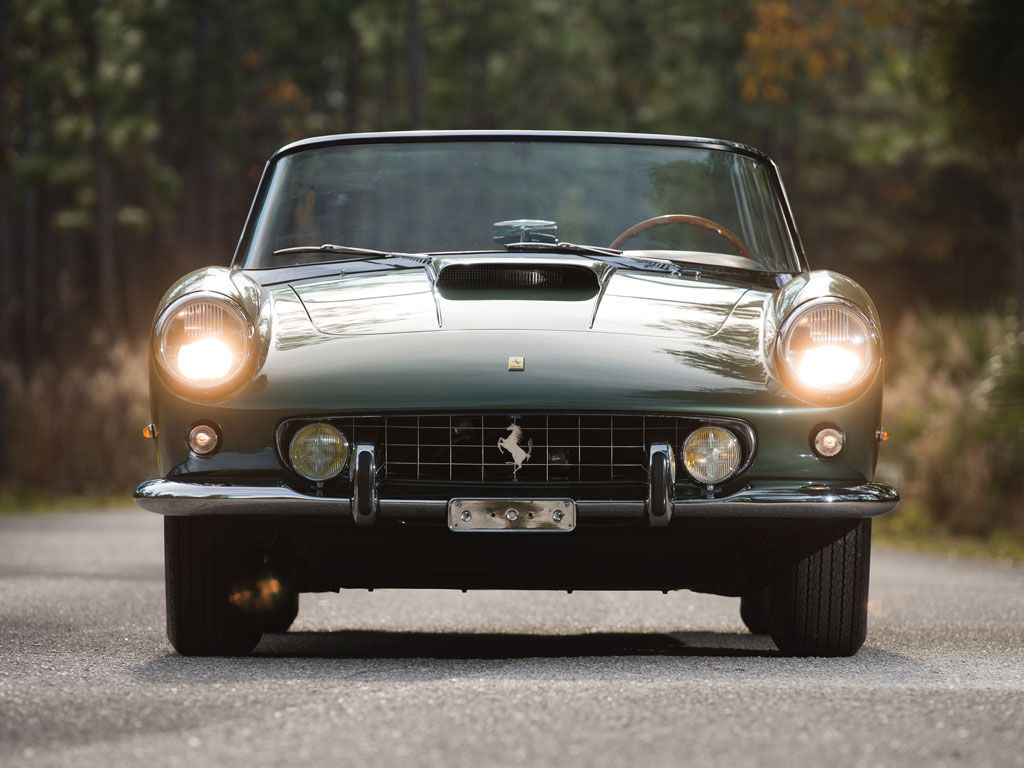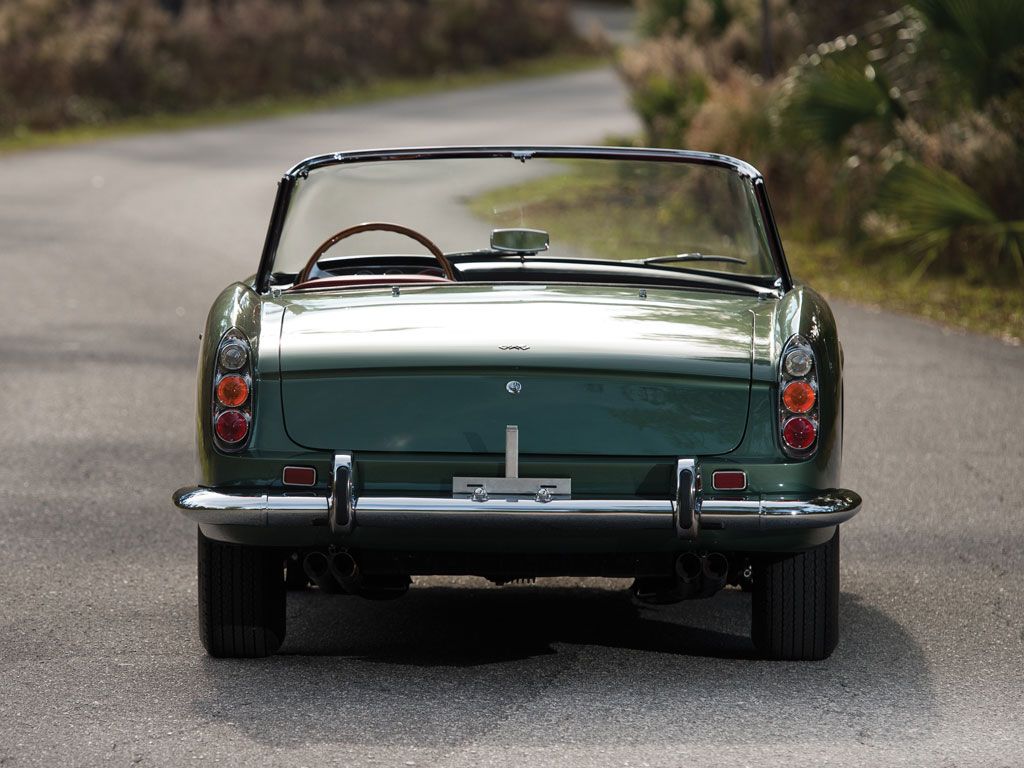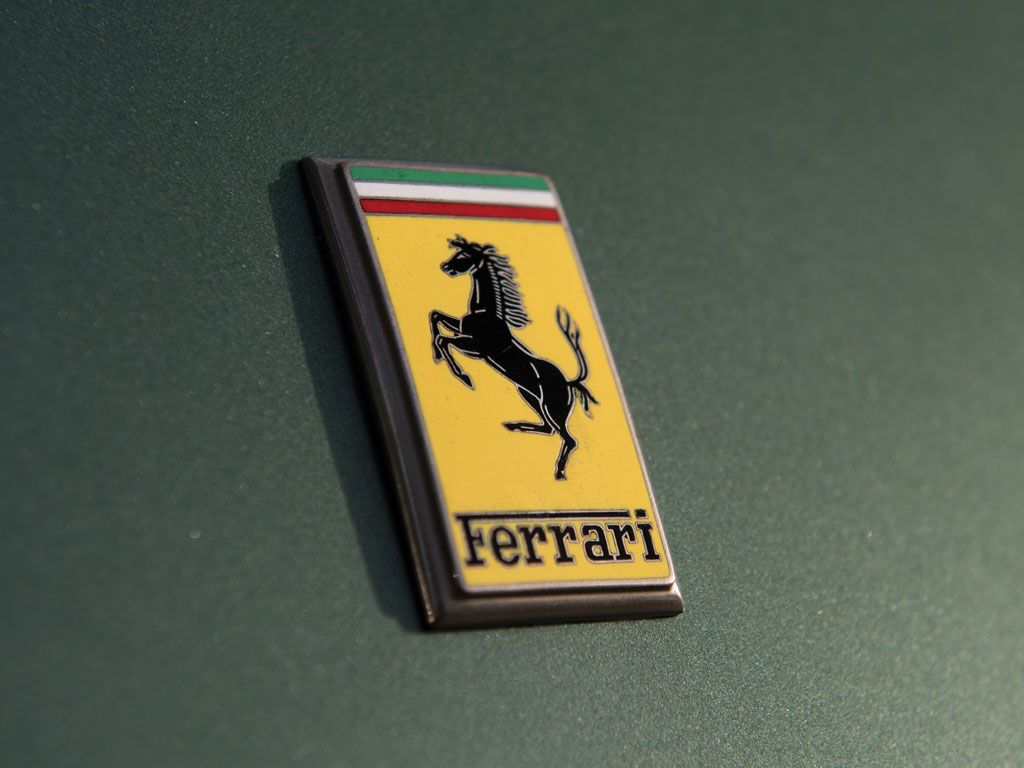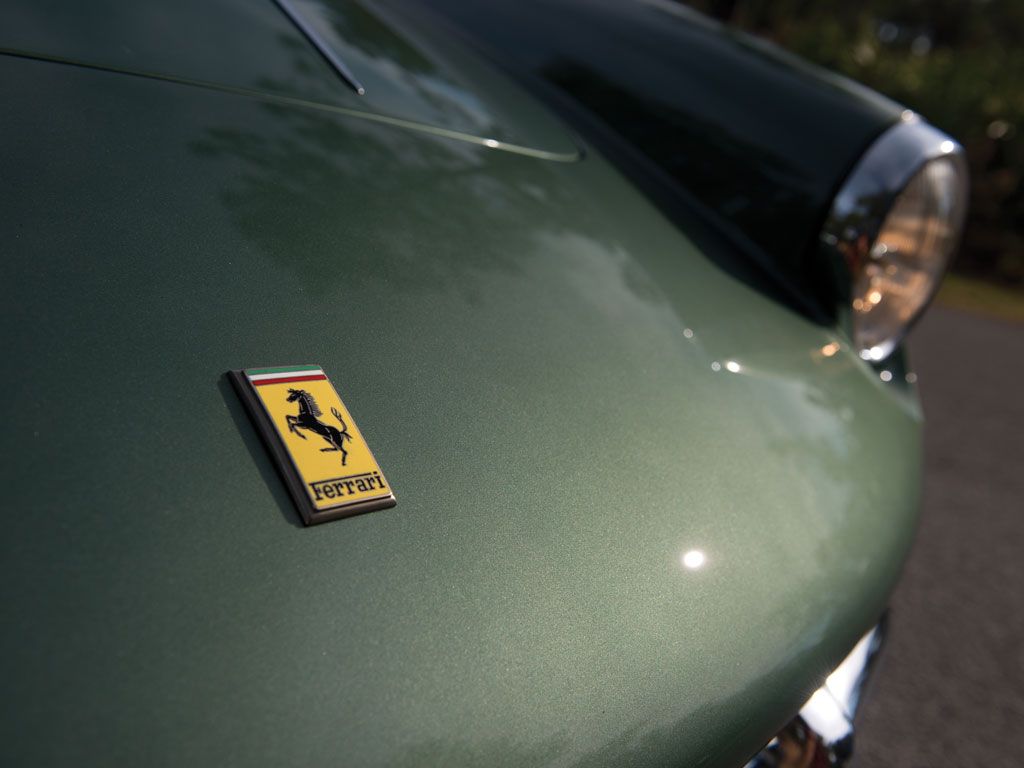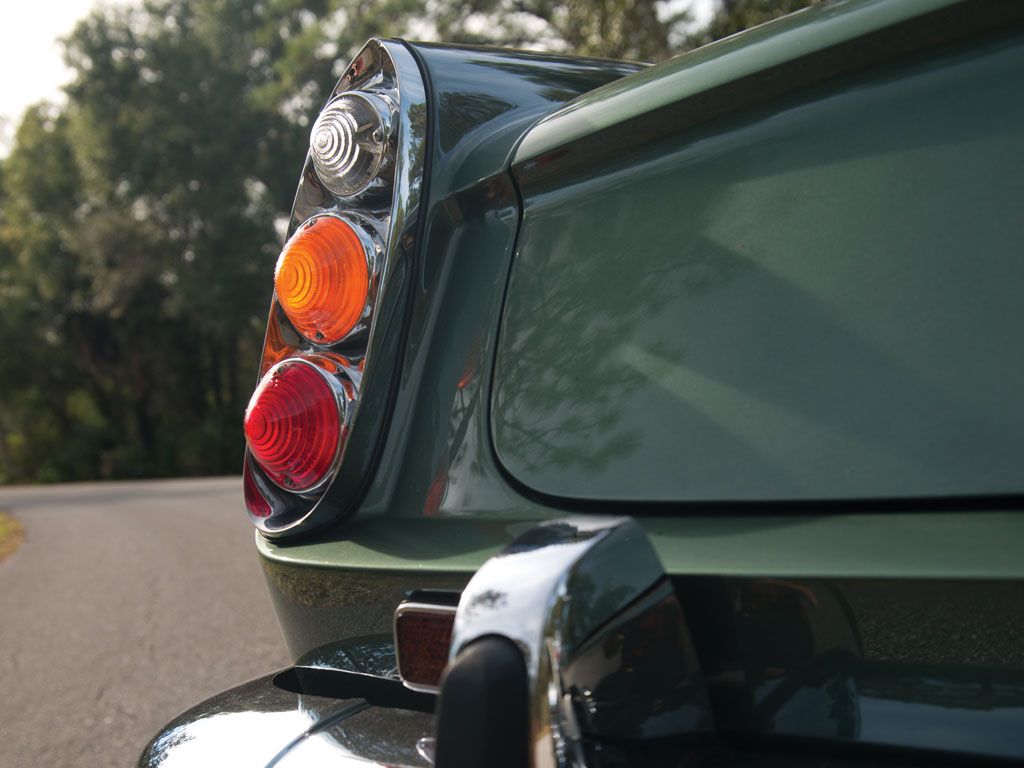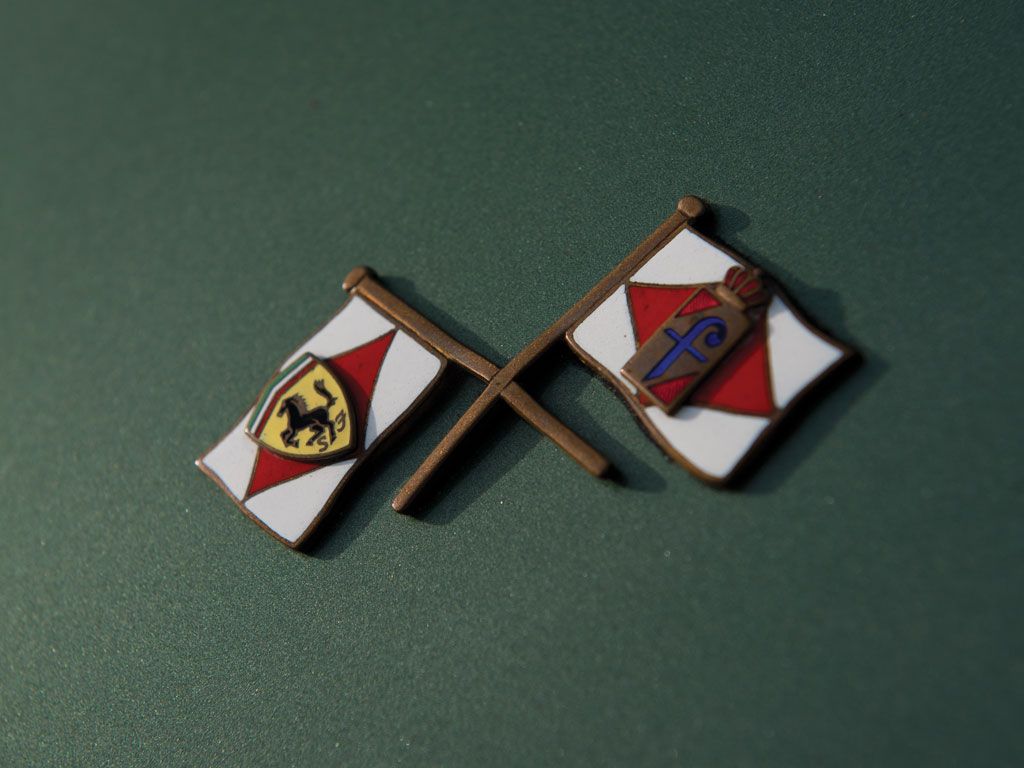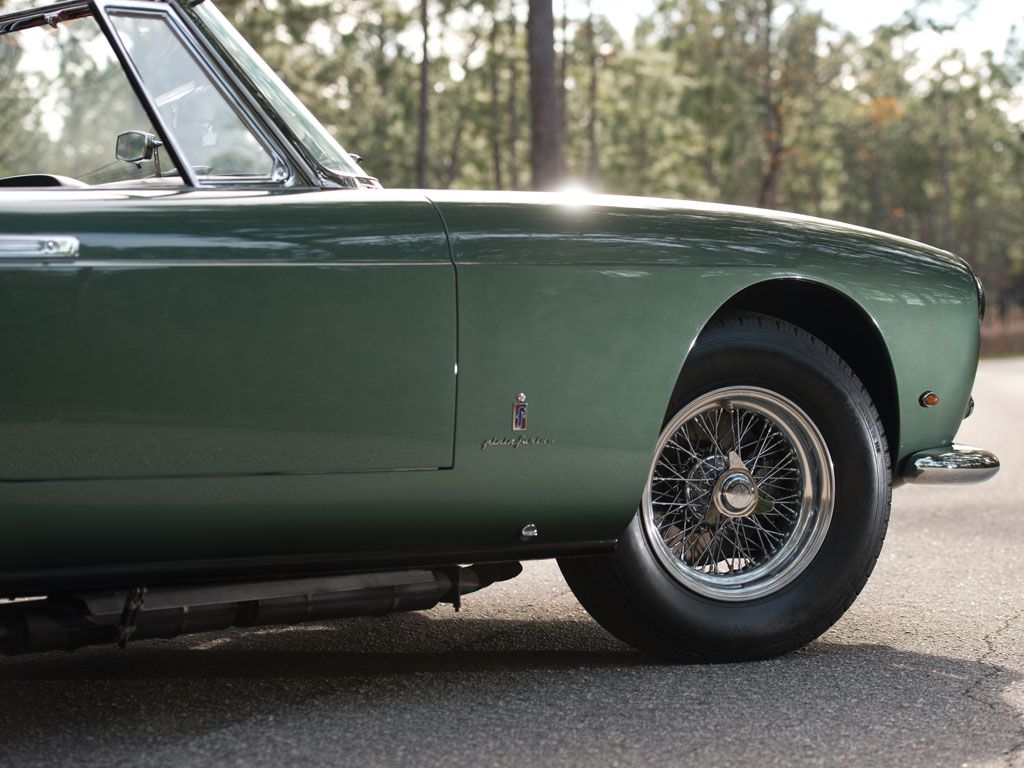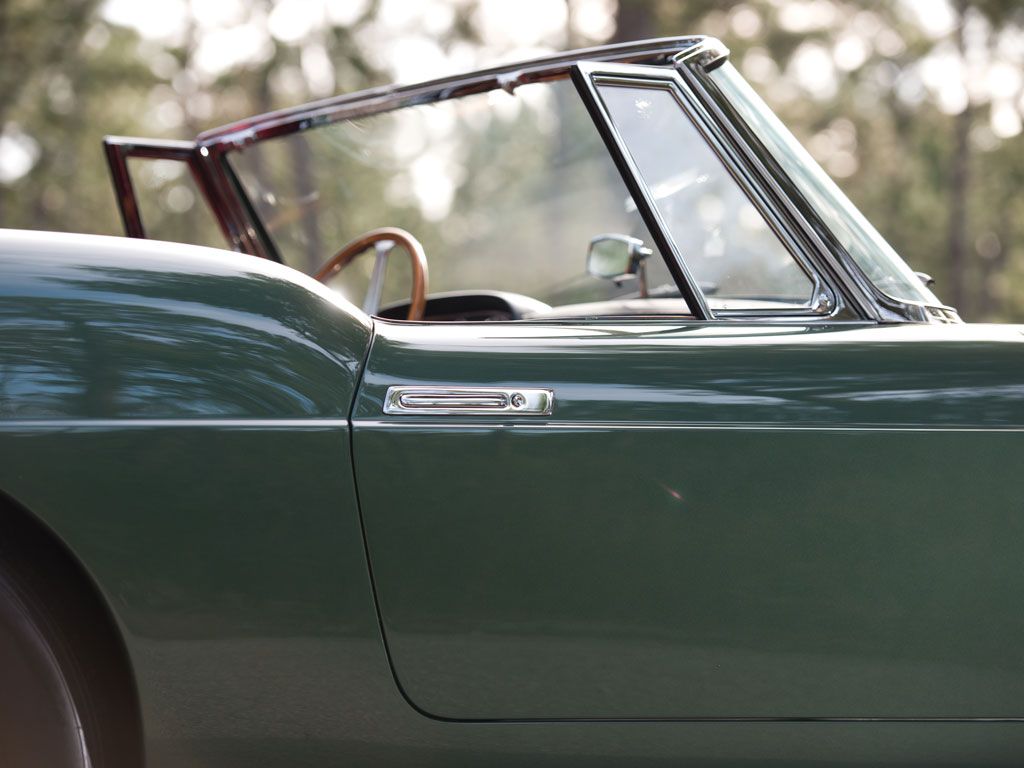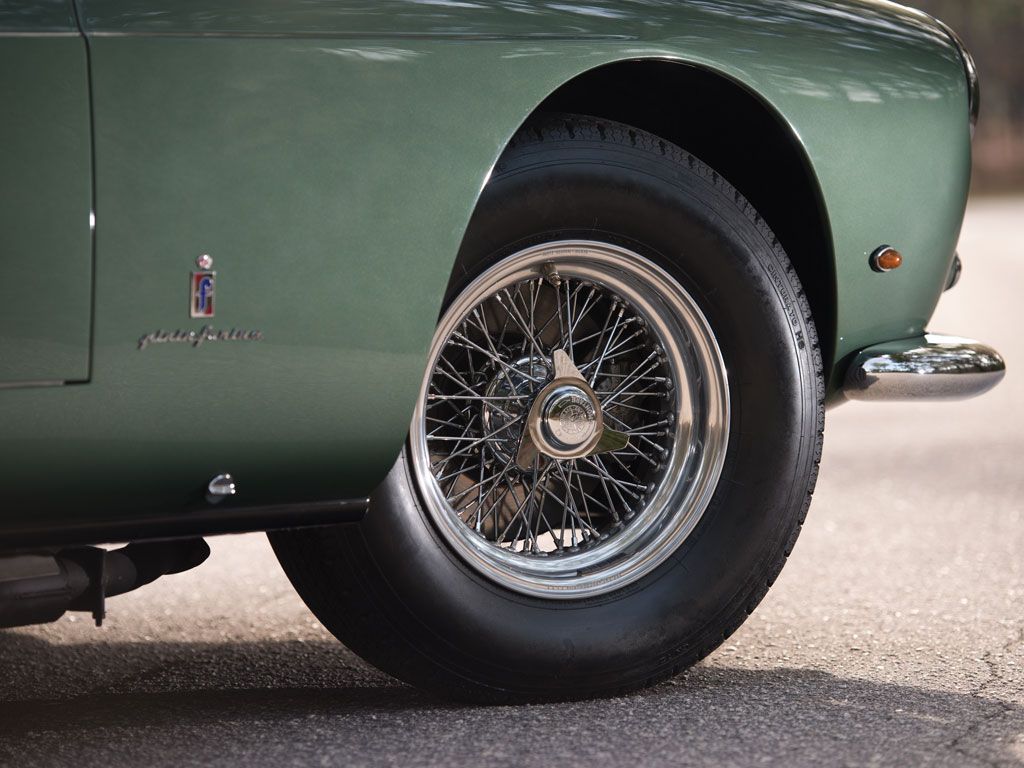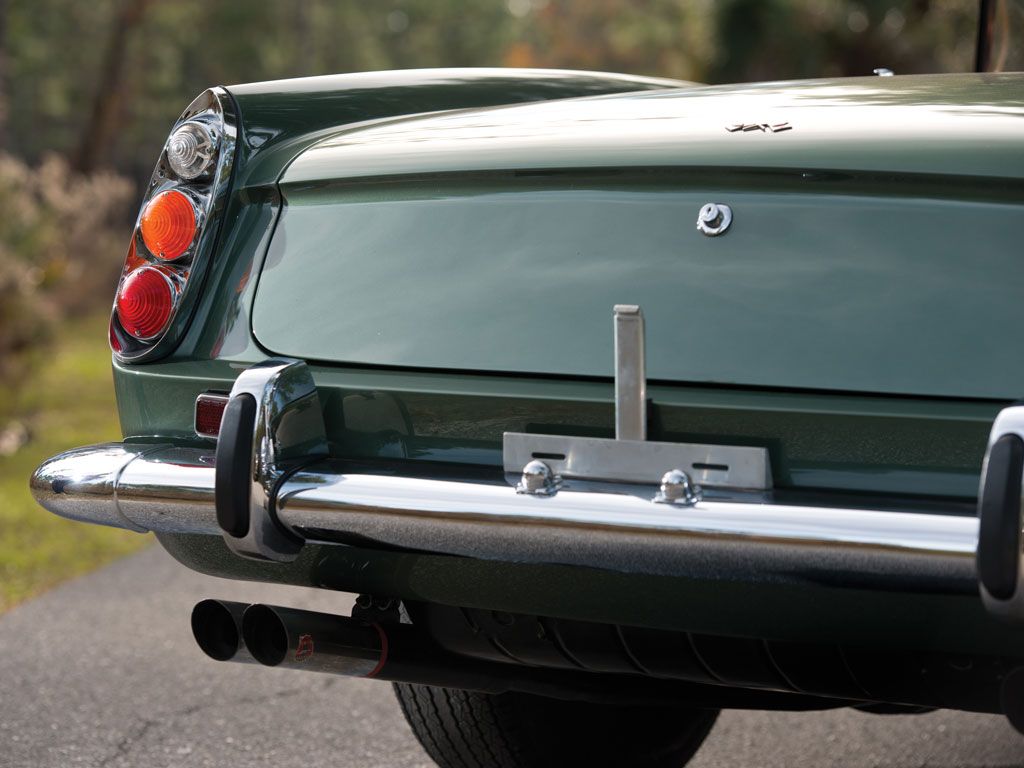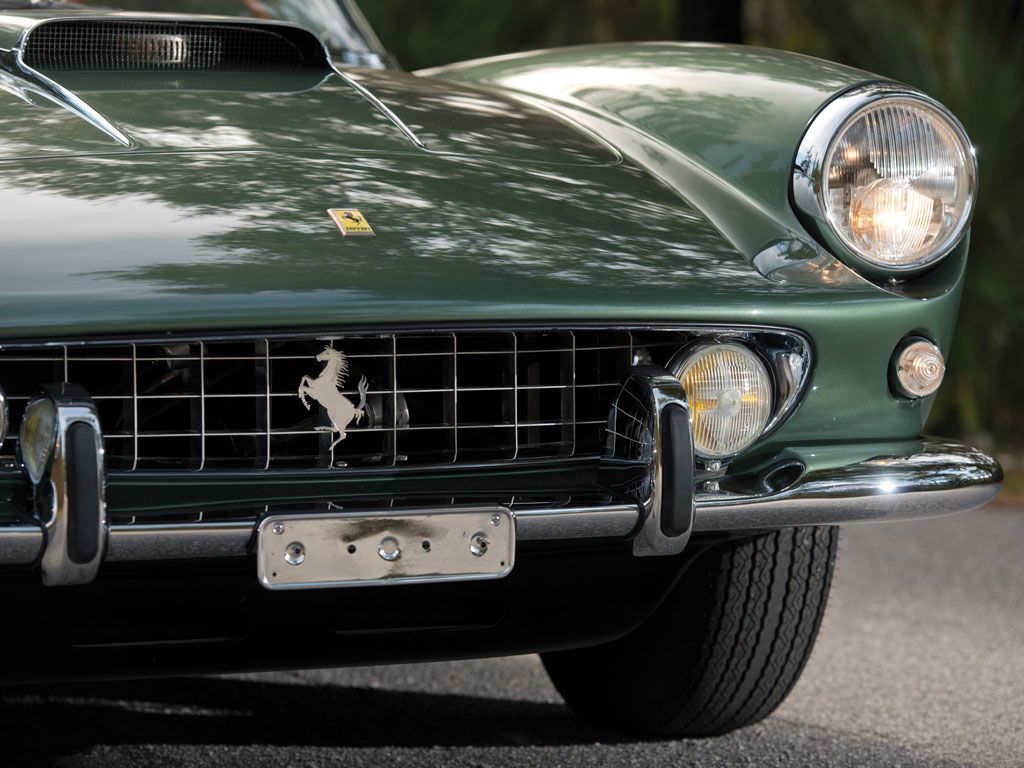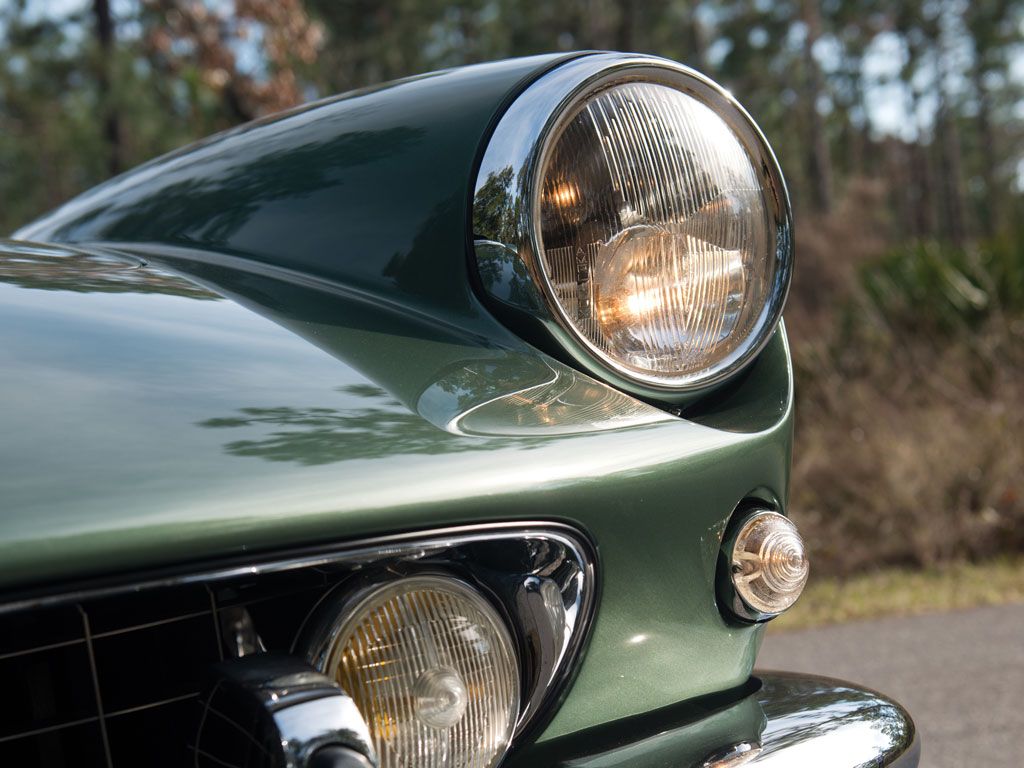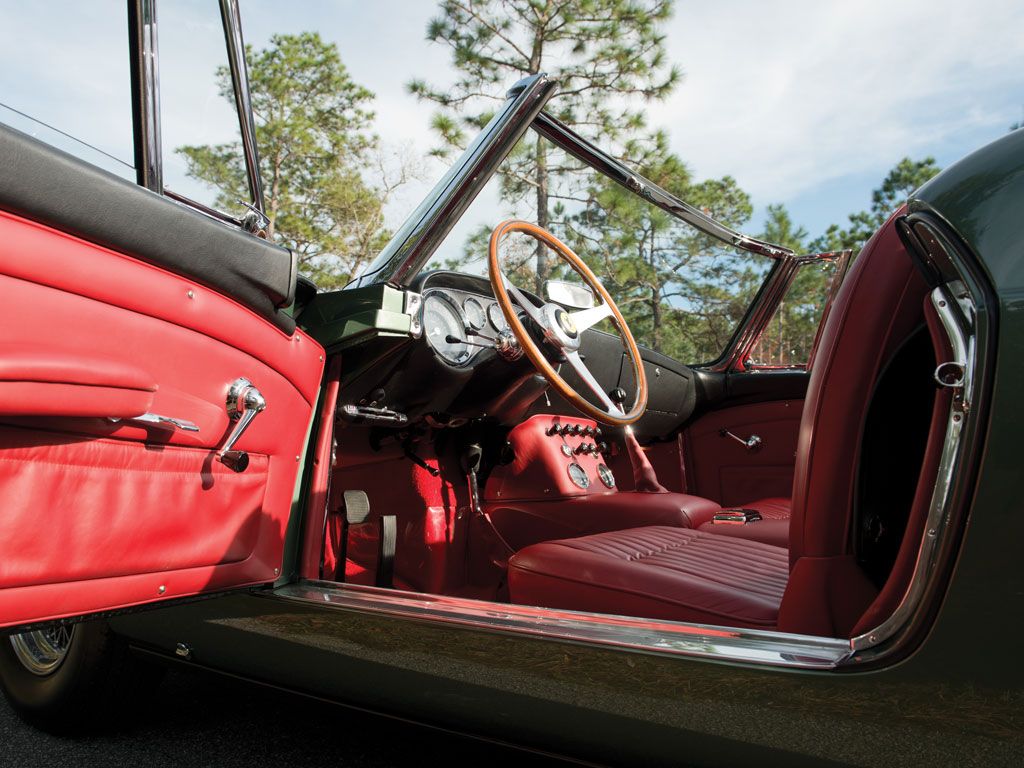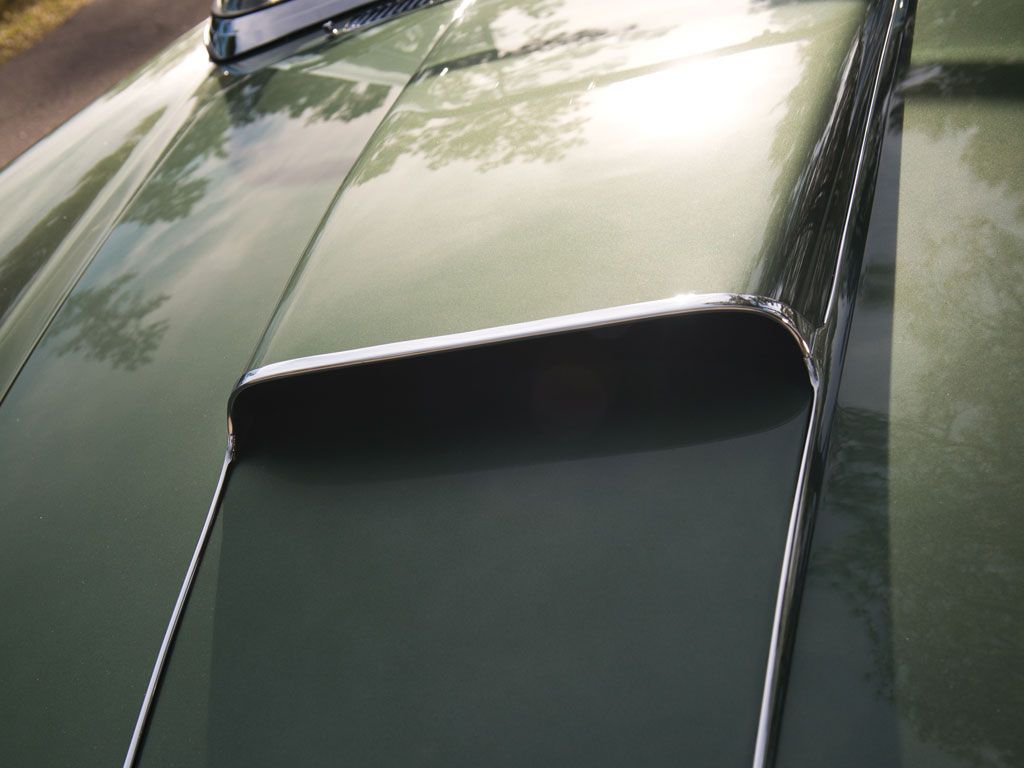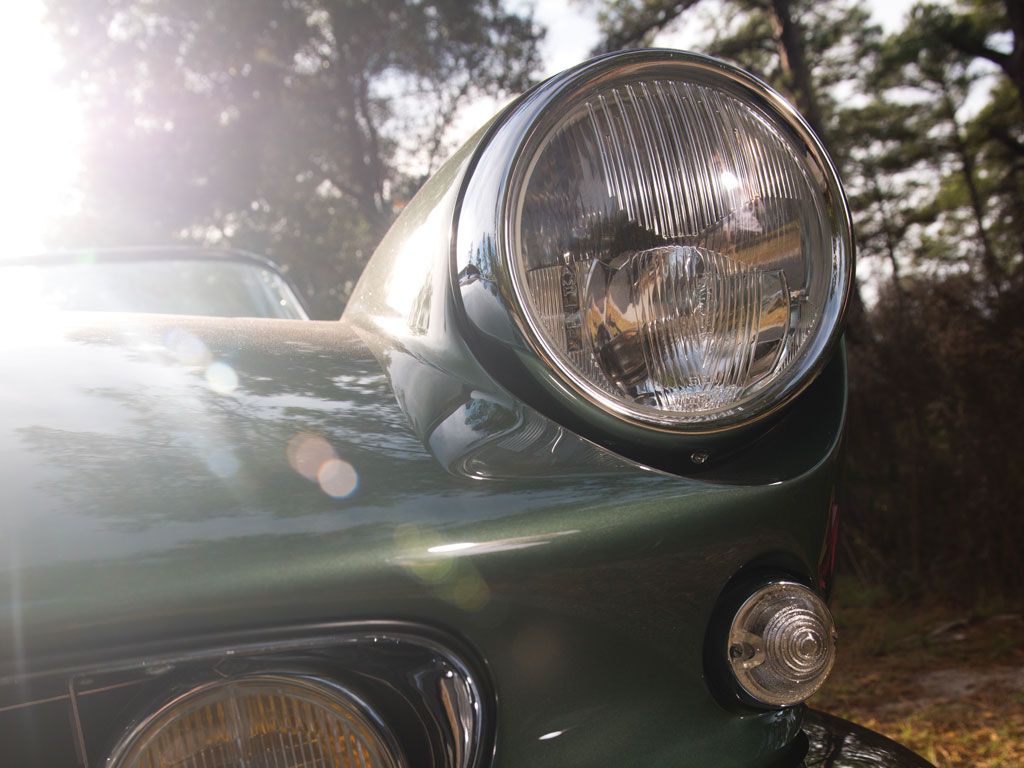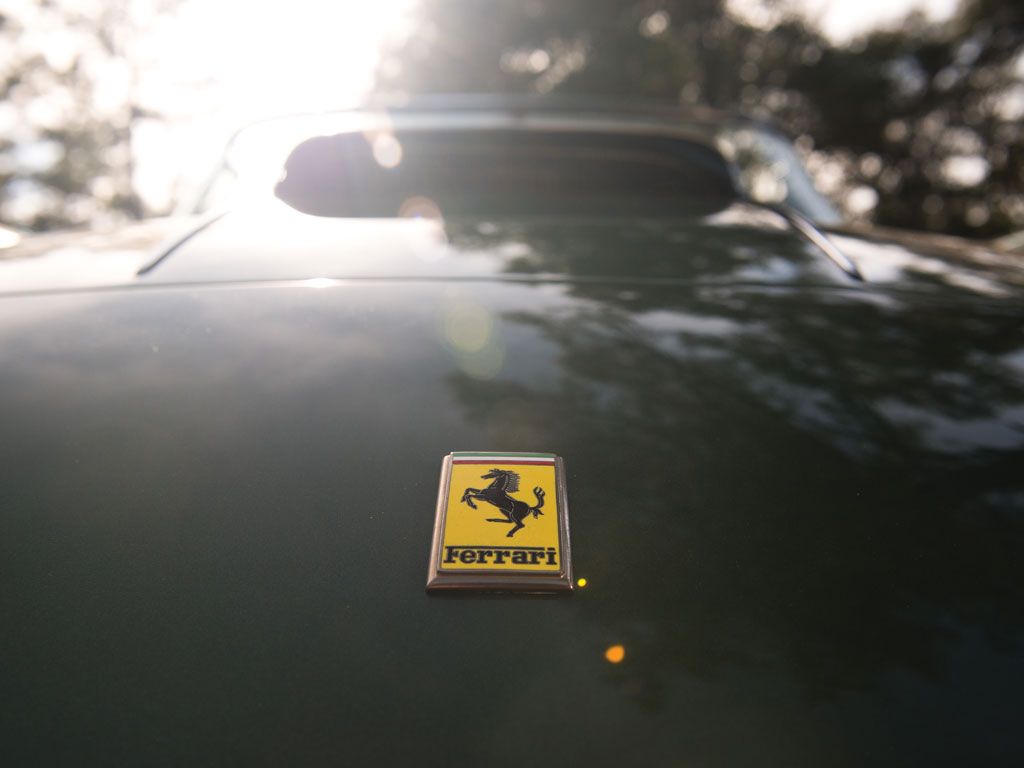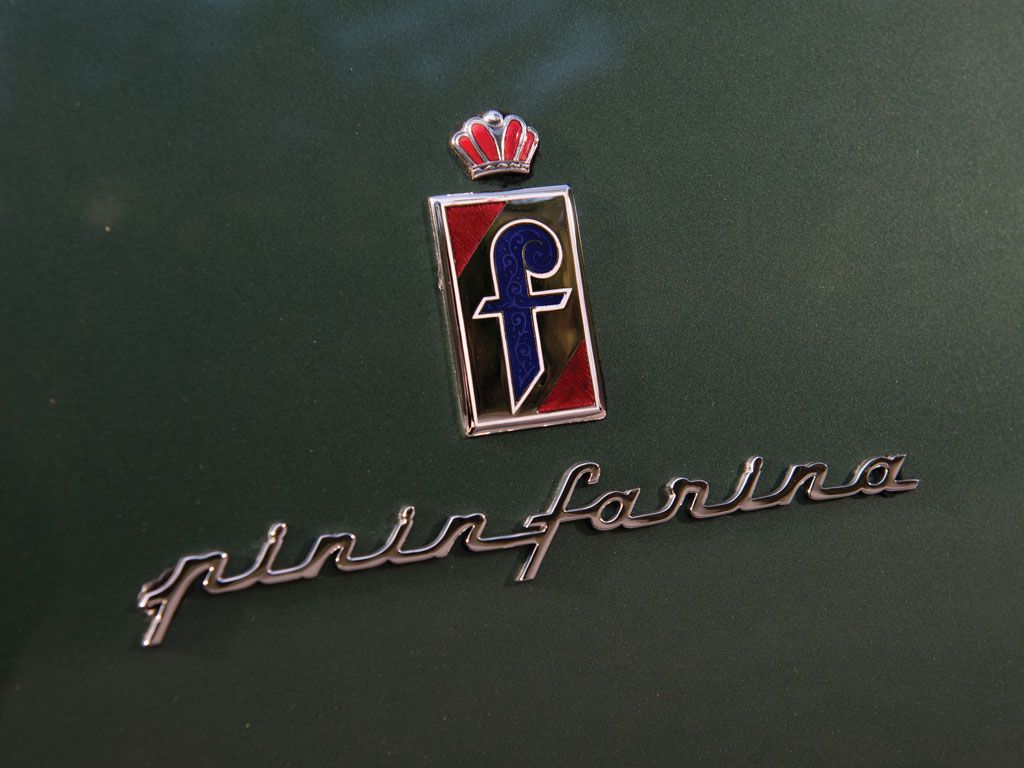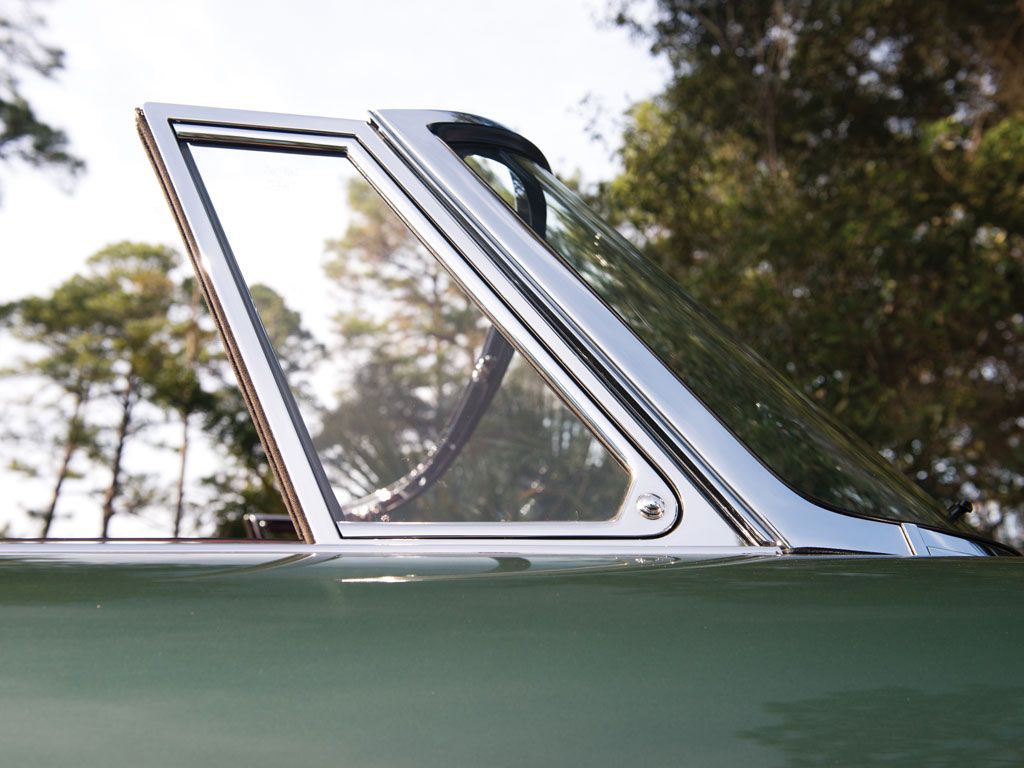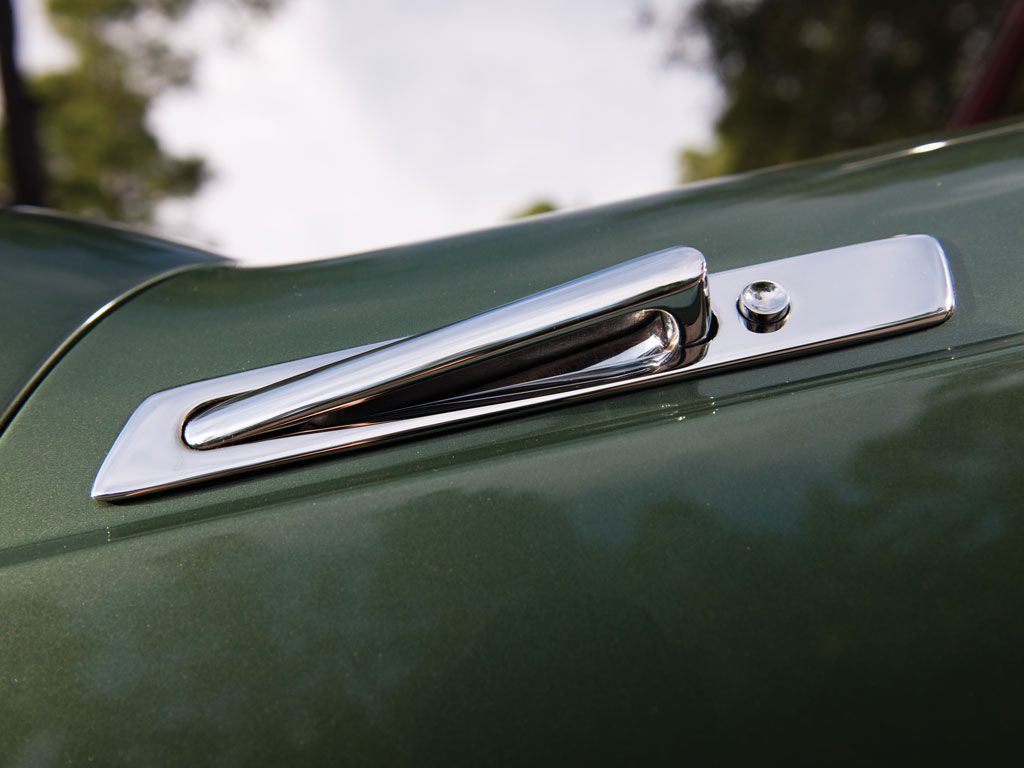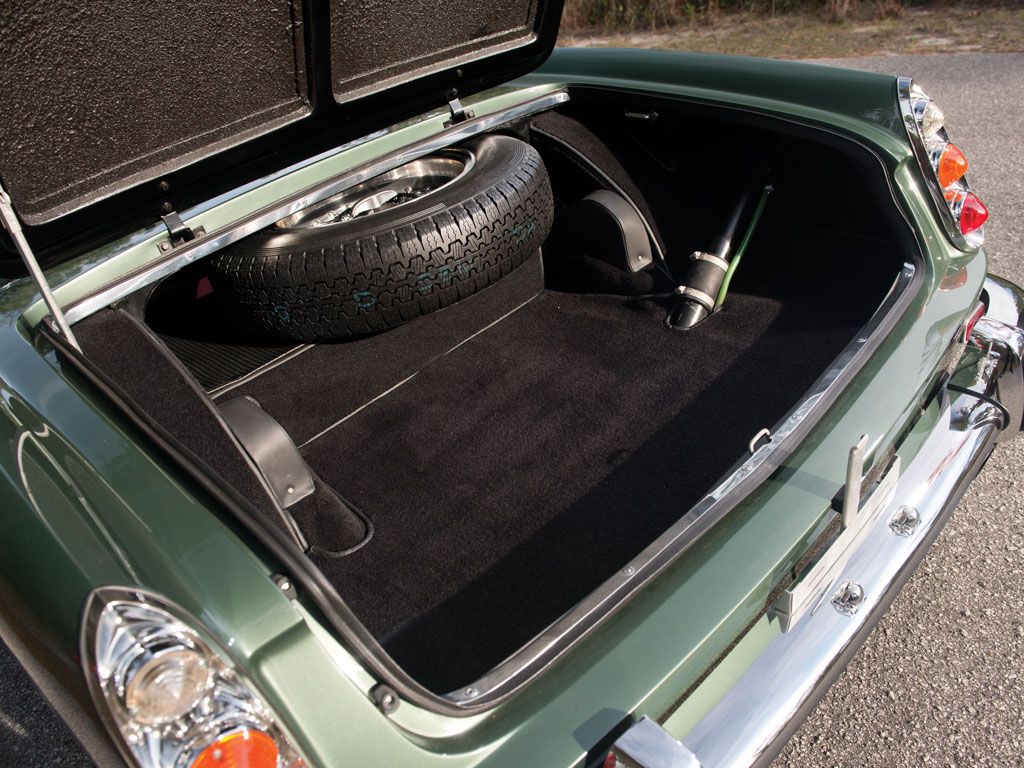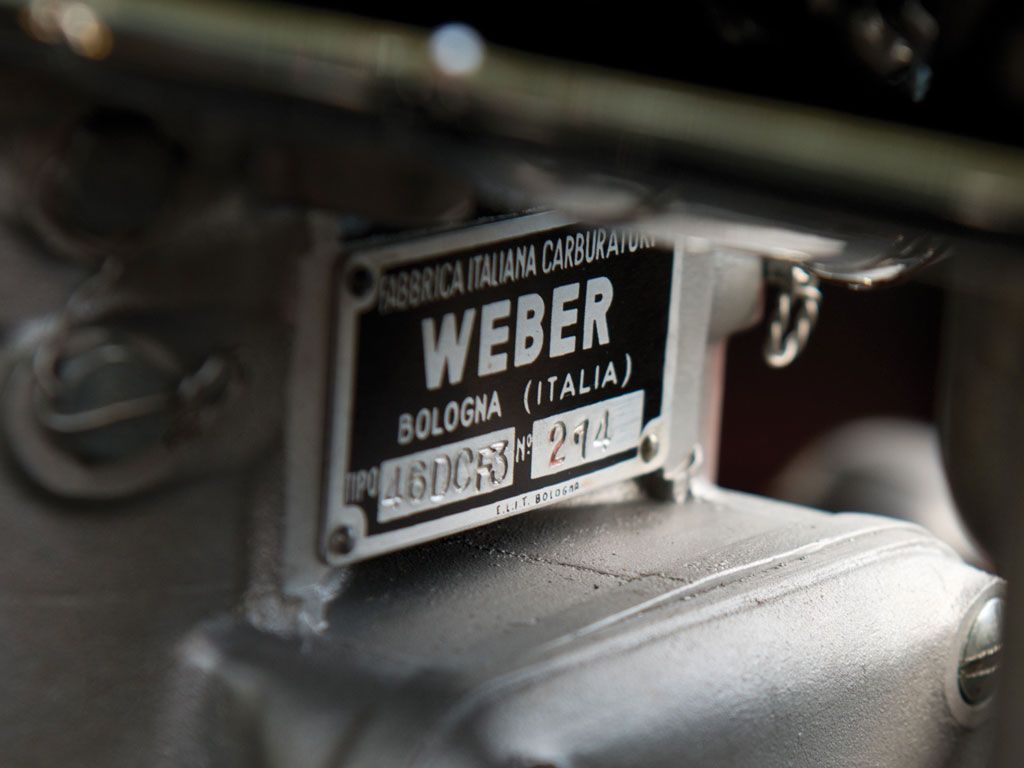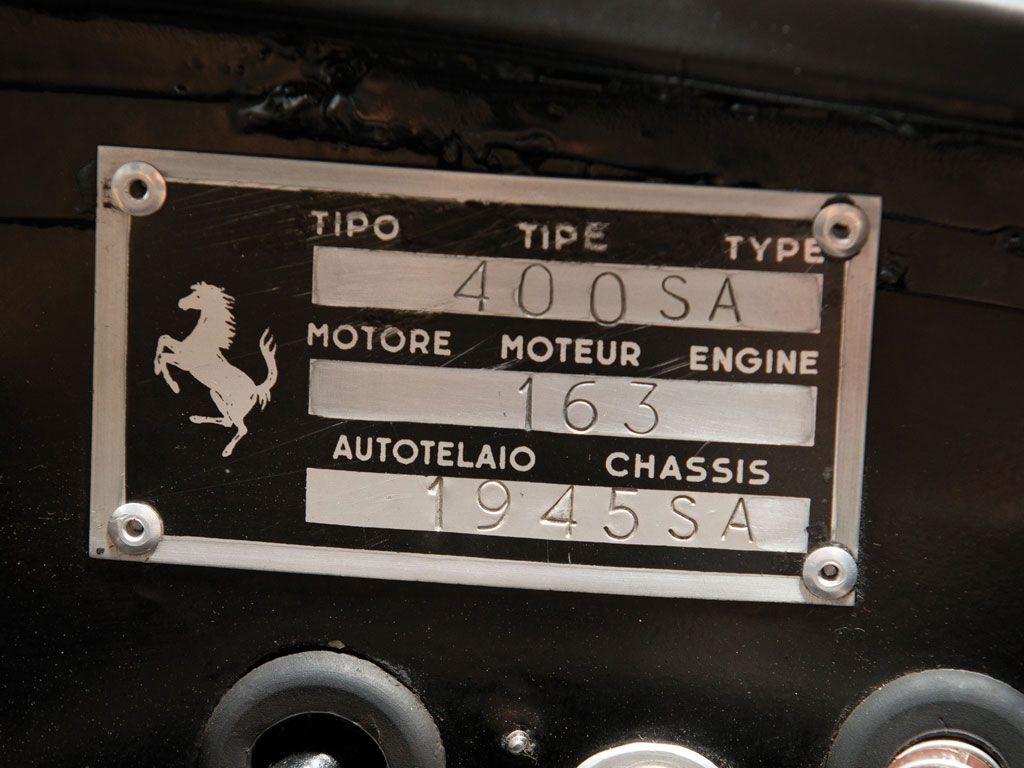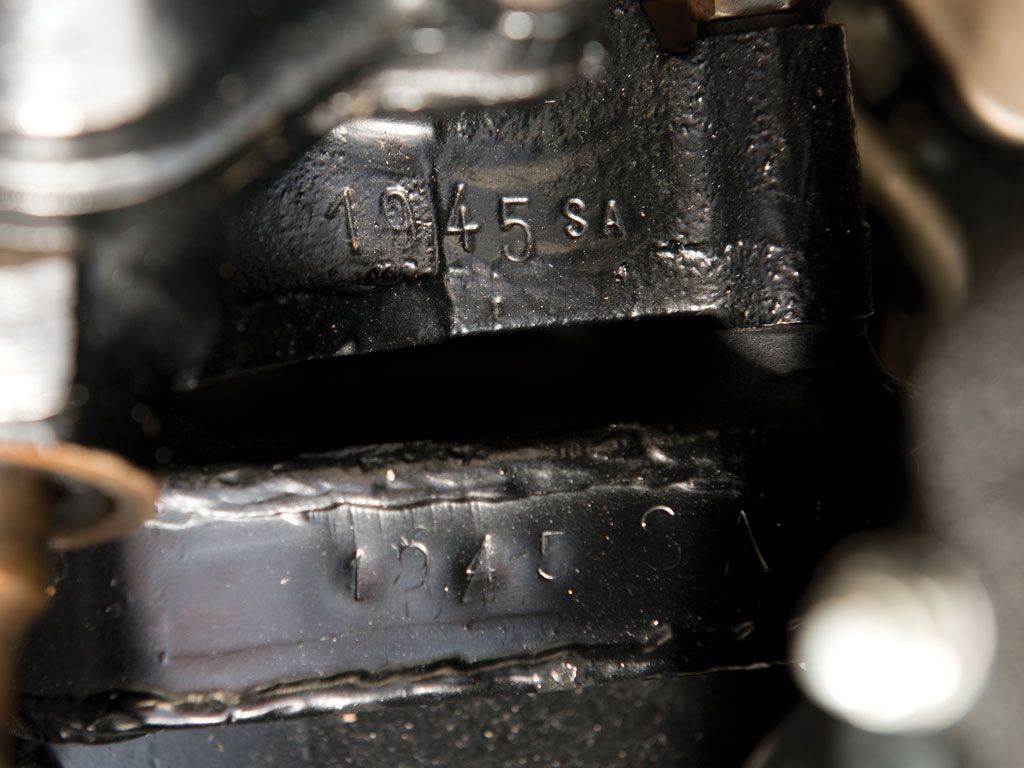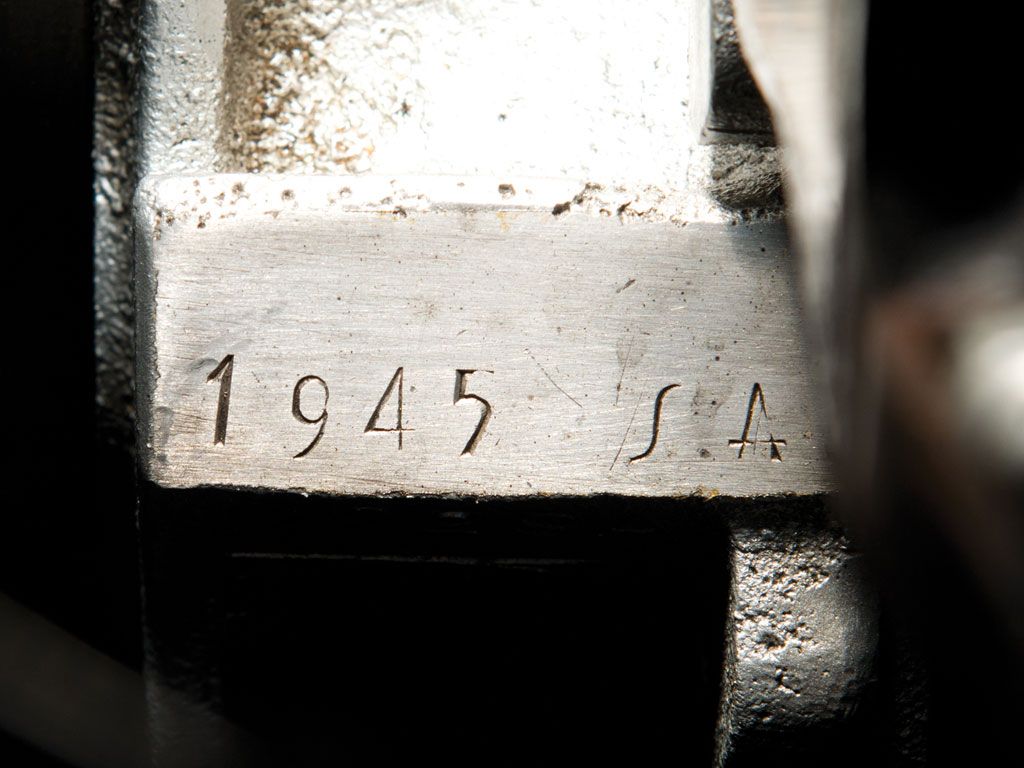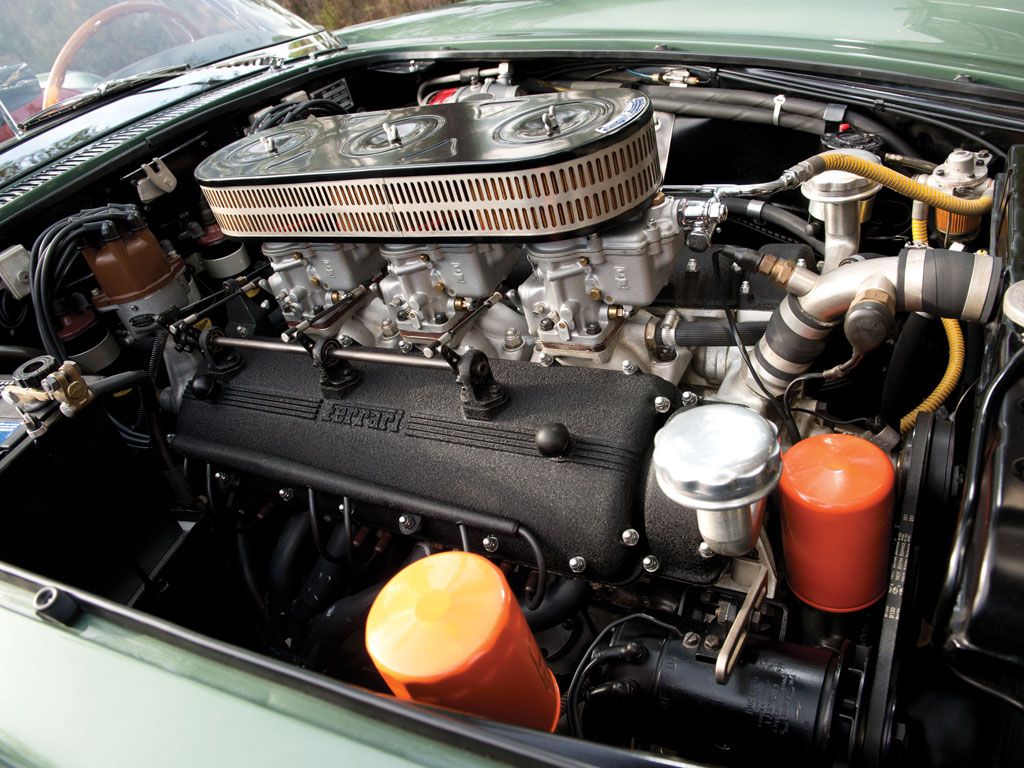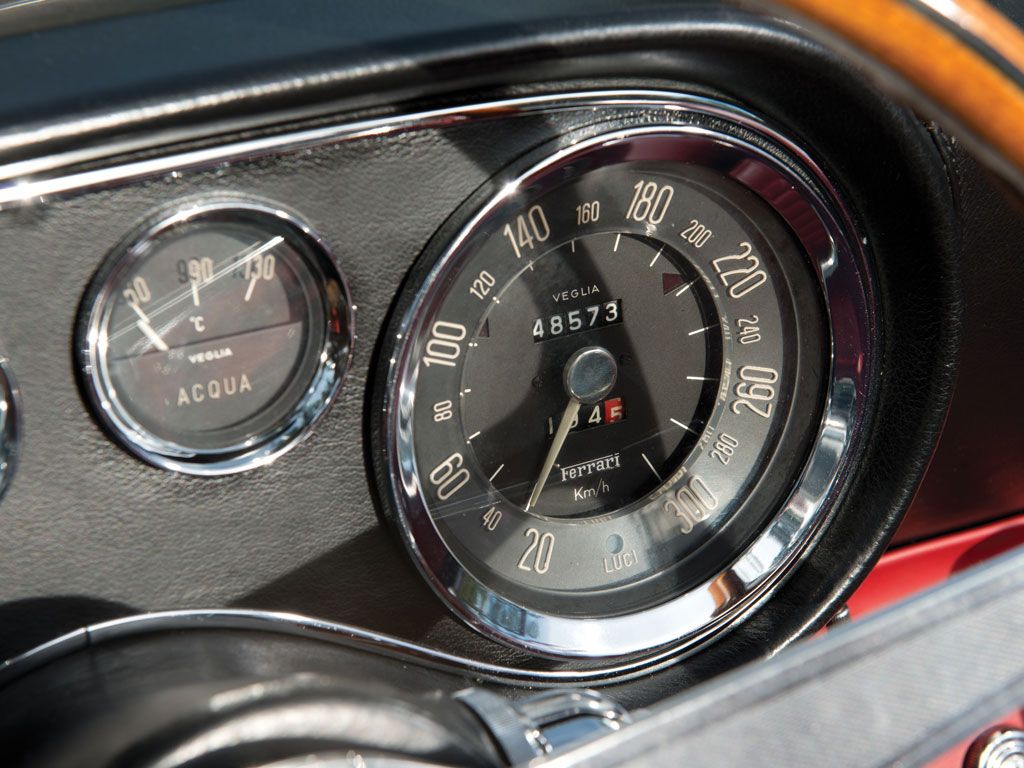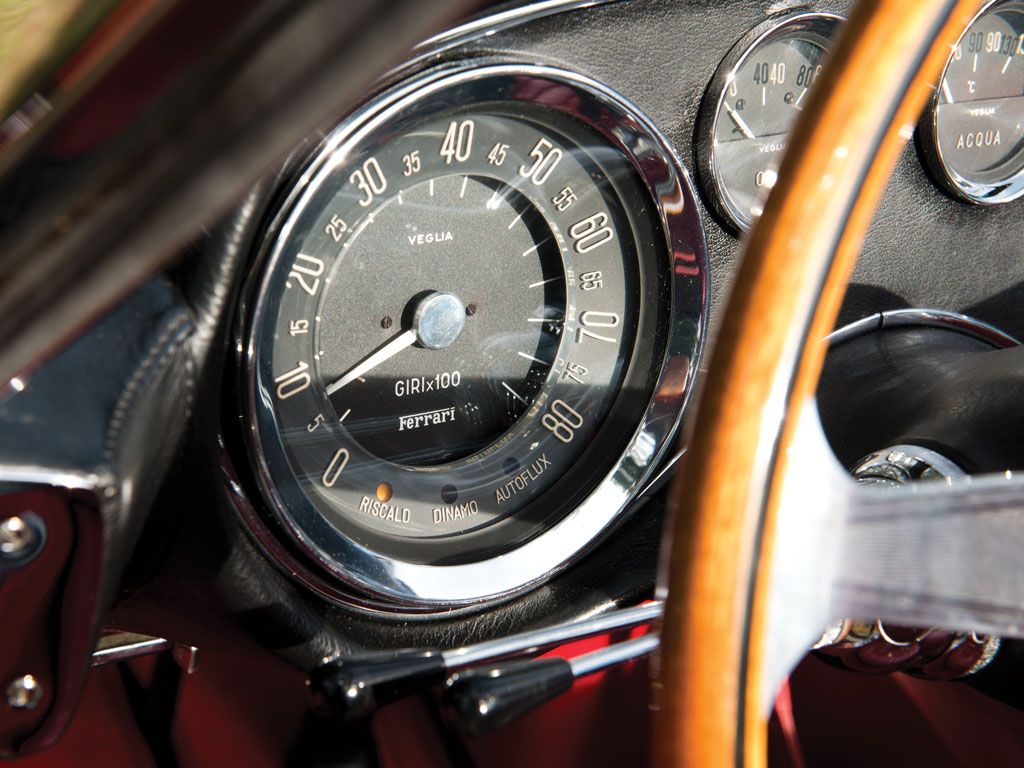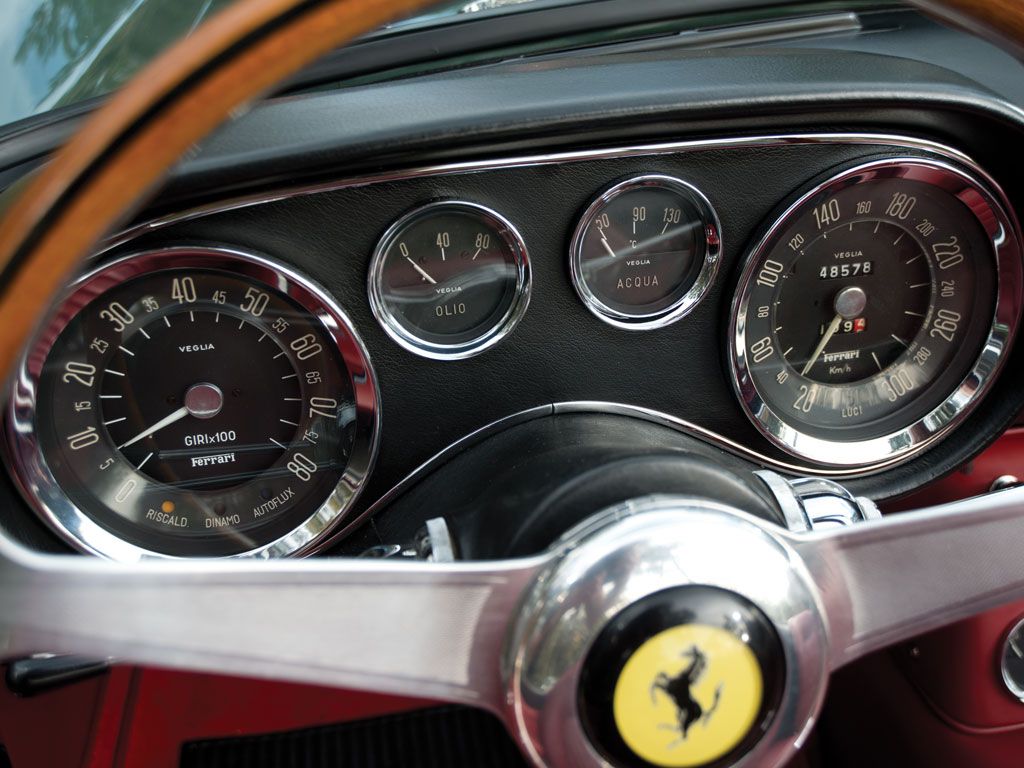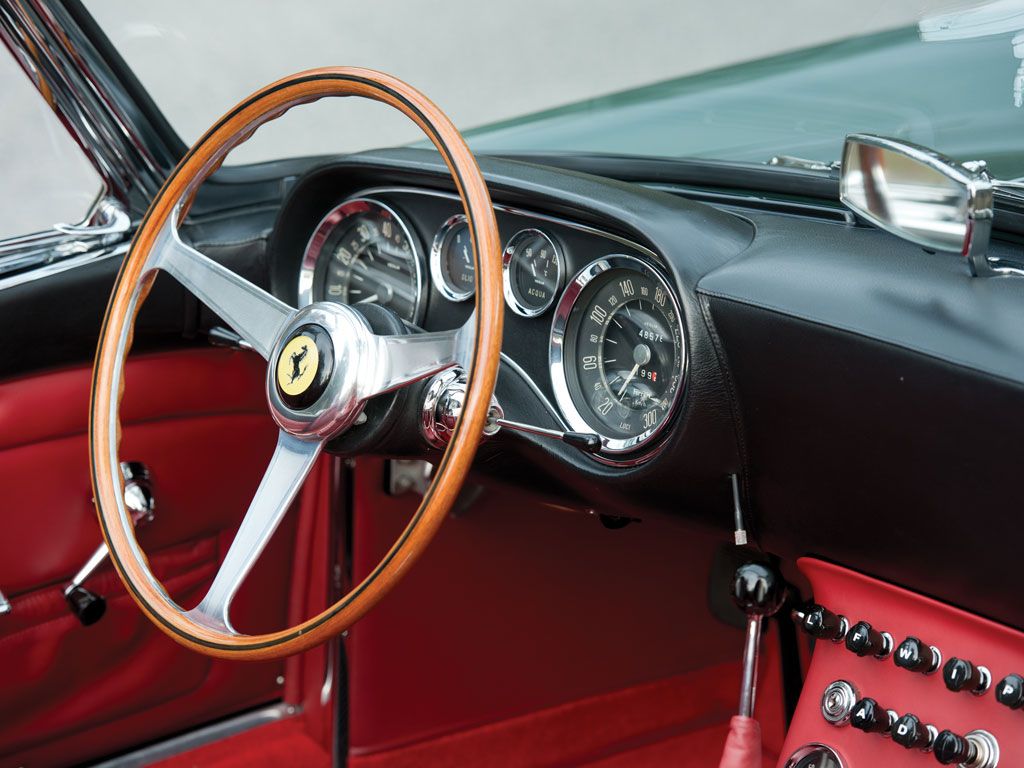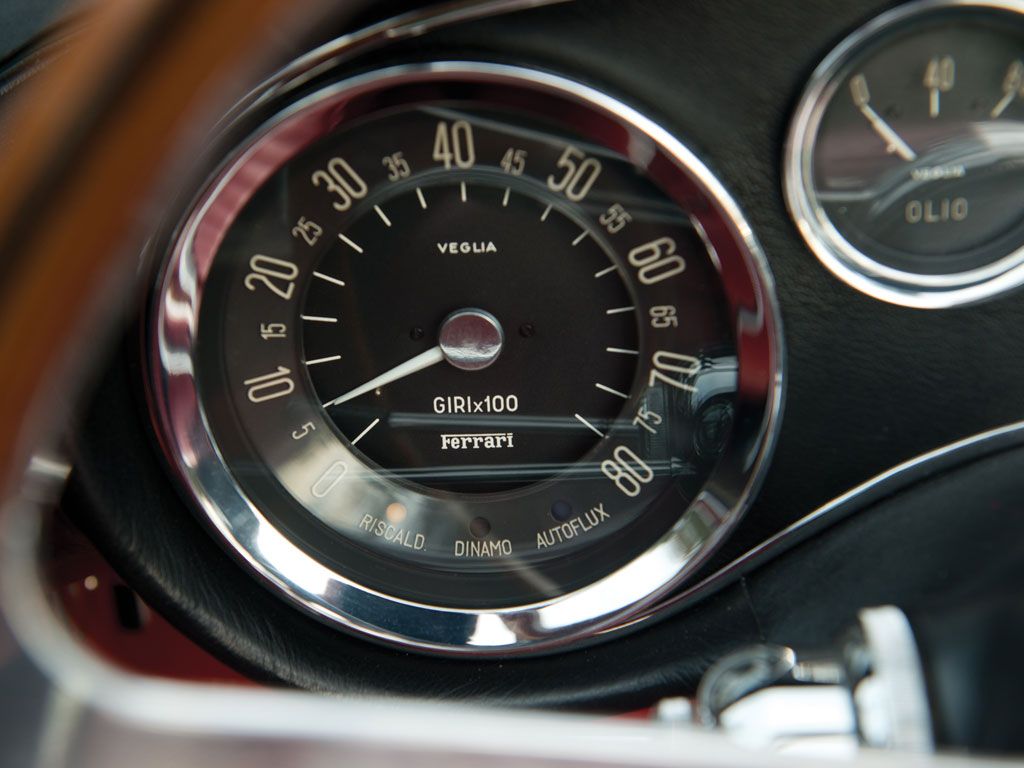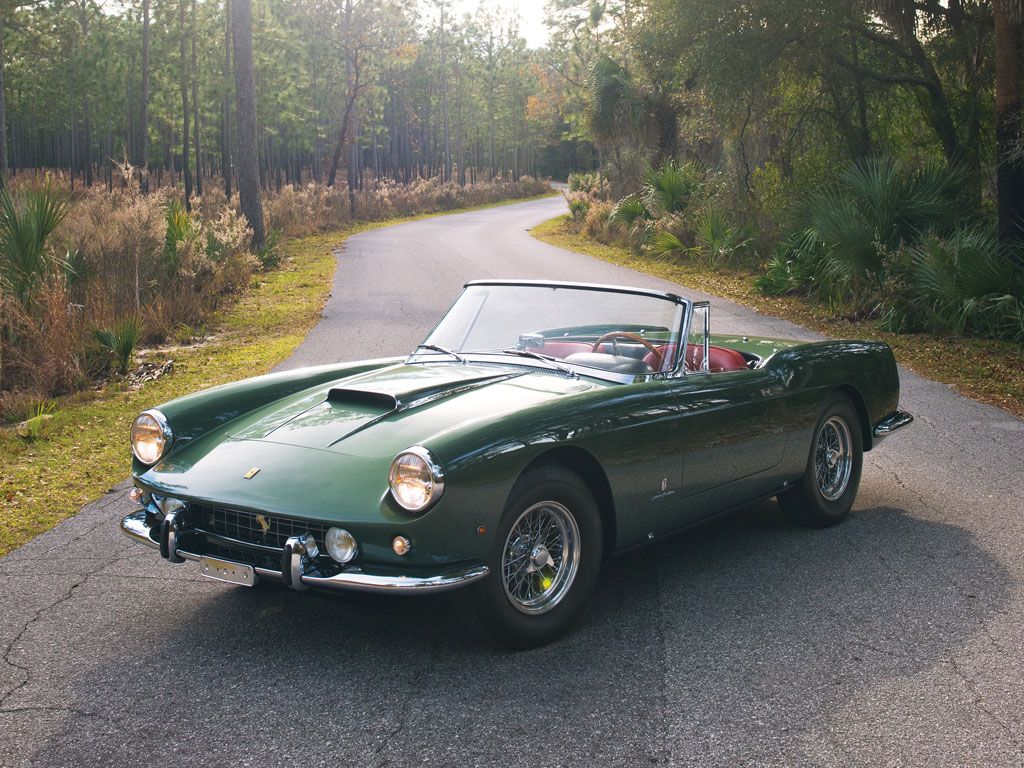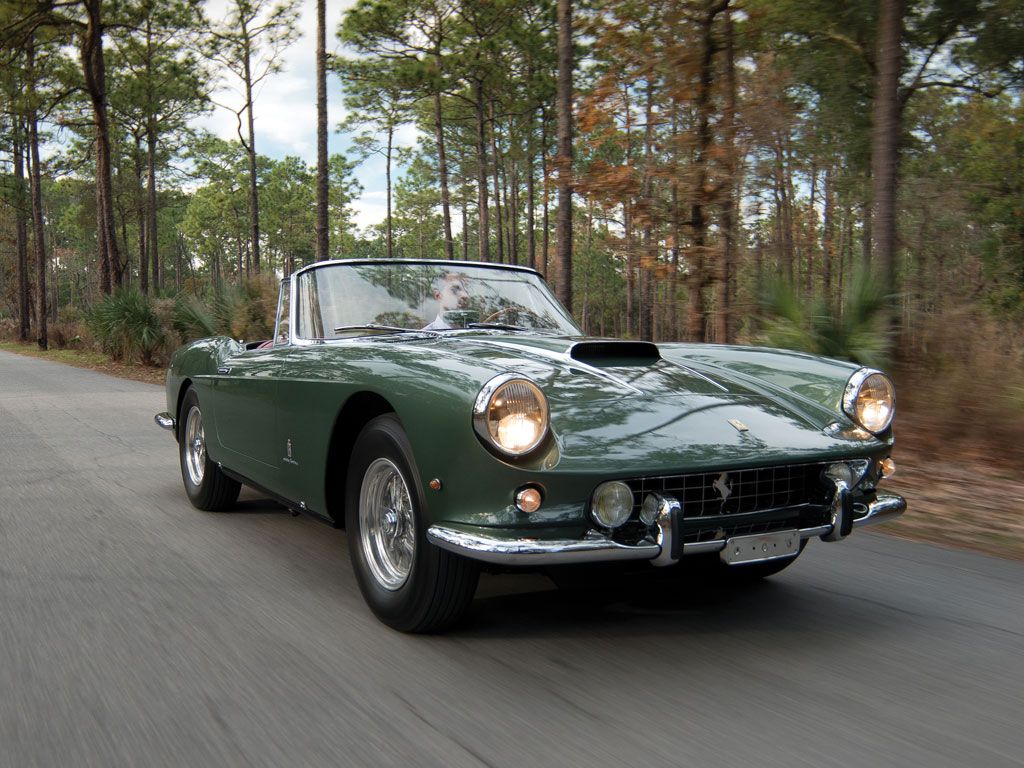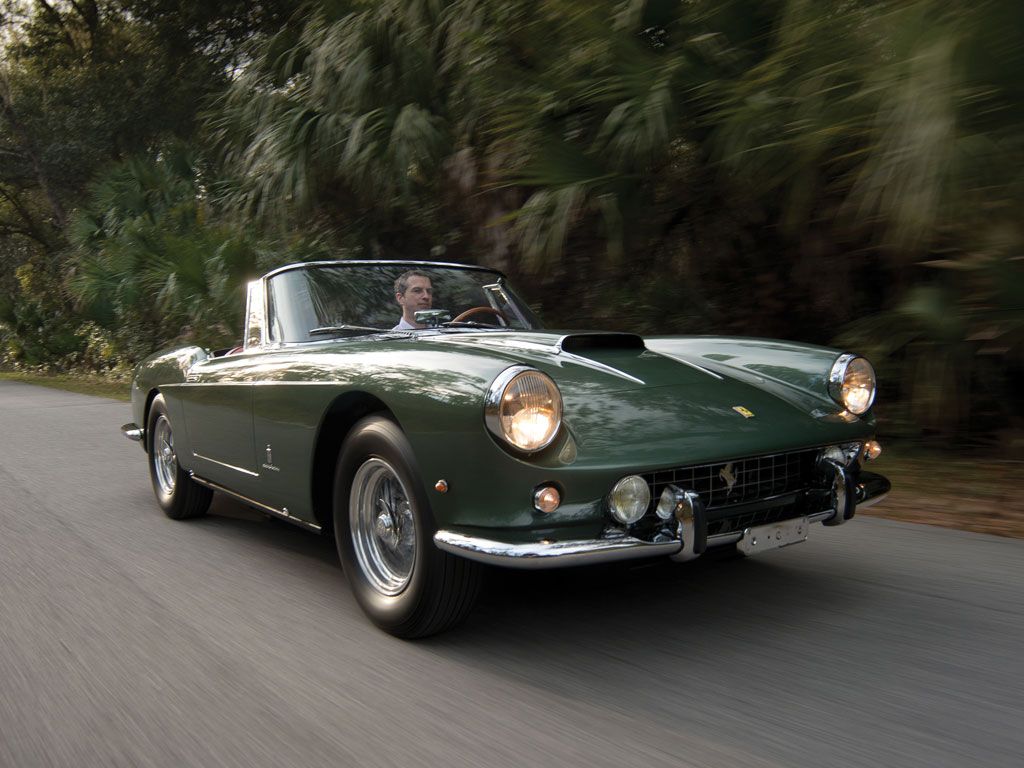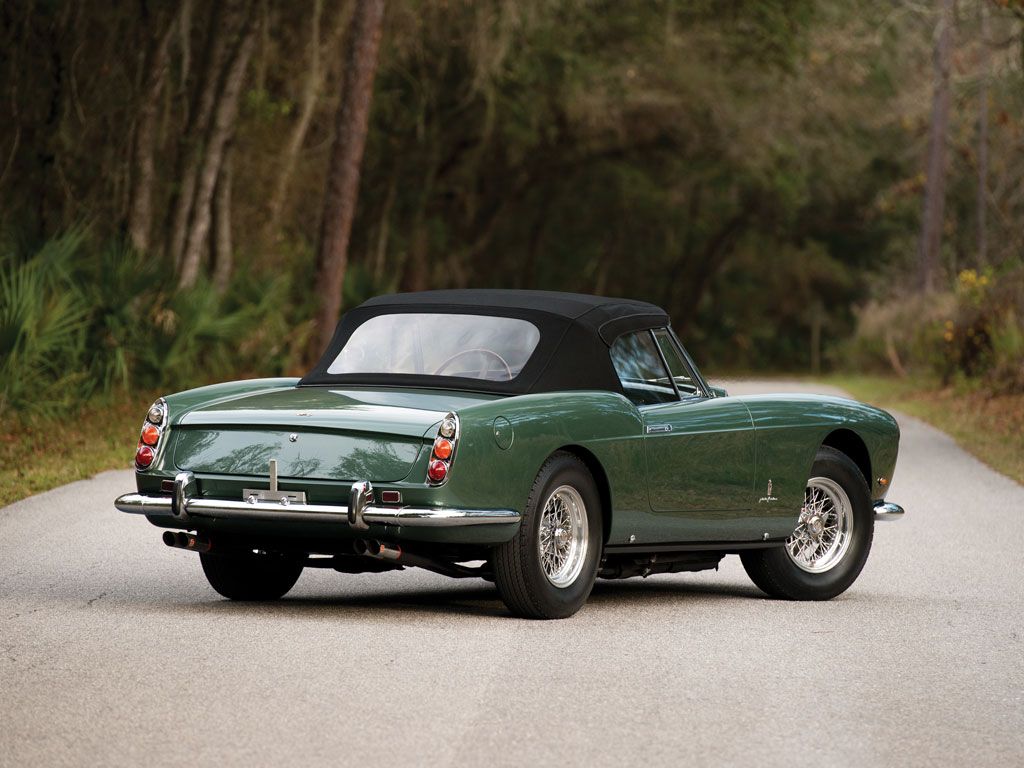The Ferrari America->ke3513 was a grand tourer produced between 1951 and 1967. The first model was the 340 America, which came with the new Lampredi V-12 developed for use in Formula 1 racing. Following the 340 was the 342 and the 375, with the 410 Superamerica first introduced in 1955. Finally, in 1959, Ferrari released the 400 Superamerica in both coupe and roadster body styles. Only 47 total were produced.
Now, over a half-century later, the Ferrari 400 Superamerica is considered one of the greatest grand touring Ferraris of all time, and consequently, one of the most collectible classic sports cars in the world. This past weekend, RM Auctions put one up on the auction block for the European Sports-Touring cars sale at Amelia Island, Florida.
The particular example before you, a 1960 SWB Cabriolet, is exceptionally rare, sporting chassis number 1945 SA and complete with an unusual and highly desirable interior/exterior color scheme combination. It’s passed between a succession of respected car collectors, including Oscar Davis. The car recently underwent a no-expense-spared expert restoration, and is presented in factory-perfect condition both visually and mechanically.
Click Continue Reading to learn more about the 1960 Ferrari 400 Superamerica SWB Cabriolet by Pininfarina.
1960 Ferrari 400 Superamerica SWB Cabriolet by Pininfarina
- Make: Array
- Model: 1960 Ferrari 400 Superamerica SWB Cabriolet by Pininfarina
- Engine/Motor: V12
- Horsepower: 340 @ 7000
- Torque: 235 @ 4500
Exterior
When it was first introduced, the Ferrari Superamerica was world-renowned for combining luxurious style with sporty performance. Only the wealthiest and most influential individuals had the means to put one in their stable, and that's even more true today.
Visually, this particular 400 offers custom Pininfarina coachwork, completed in the independent designer’s Turin-based factory on July 6, 1960. According to Ferrari historian Marcel Massini, chassis number 1945 SA was the third of only seven short-wheelbase Superamericas created. It’s been fitted with left-hand drive and open headlights, while the paint is Verde Bottiglia green (MM 16364). Unique details include chrome trim in the hood and flush-mounted door handles.
This Superamerica hails from the first batch of 400s ever built, which used a 95.28-inch chassis for both the coupe and cabriolet, with the cabriolet being the rarer body style. Afterward, a second batch of Superamericas was built using an extended 102.36-inch wheelbase for more interior space, thus making the SWB convertible the rarest iteration of the line.
The car recently saw a complete restoration by Classic Coach, including a return to the original green paint after several previous owners had the car redone in both white and red.
Exterior Dimensions
|
Wheelbase |
2,420 MM / 95.3 Inches |
|
Front track |
1,359 MM / 53.5 Inches |
|
Rear track |
1,350 MM / 53.1 Inches |
|
Length |
4,300 MM / 169.3 Inches |
|
Width |
1,778 MM / 70.0 Inches |
|
Height |
1,300 MM / 51.2 Inches |
Interior
Part of the unusual color combination for this vehicle is the red Rosso Connolly (VW 3171) leather interior. Other features include a large, thin-rimmed wood steering wheel, chrome-trimmed gauges and a long shifter. The odometer is showing 48,578 km (30,185 miles), while a period-correct spare wheel is mounted in the trunk. Above all that crimson leather is unlimited headroom.
Drivetrain
The 400 Superamerica came from the factory with a 4.0-liter Colombo V-12 powerplant. While smaller than the 5.0-liter V-12 found in the 410 Superamerica that came before it, this engine boasted the same 340 horsepower. Unlike the 5.0-liter “long-block,” the 4.0-liter was based on the Colombo 3.0-liter, single-overhead-cam engine first utilized in the 250 Europa GT. Capacity was increased by enlarging bore to 77 millimeters (3.03 inches), while stroke was lengthened to 71 millimeters (2.8 inches), thus yielding a total capacity of 3,967 cubic centimeters (242.08 cubic inches). A twin coil and distributor ignition system was also added, while triple Weber carburetors improved fuel delivery. Also new for the 400 was the installation of four-wheel disc brakes.
With Classic Coach taking care of the exterior, Ferrari specialist Greg Jones of Stuart, Florida, was responsible for the mechanical bits. Receipts chronicling the extent of the restoration are on file for inspection. After a stint behind the wheel, Gord Duff, Car Specialist with RM Auctions, said that he could attest to the vehicle’s claim as “a fantastic, turnkey driving example.”
Drivetrain Specifications
|
Engine |
Type 163 Columbo,60° V12 |
|
Position |
Front Longitudinal |
|
Bore |
77 mm / 3.03 in |
|
Stroke |
71 mm / 2.8 in |
|
Compression |
8.8:1 |
|
Power |
340 HP @ 7,000 RPM |
|
Torque |
235 LB-FT @ 4,500 RPM |
|
Top speed |
174 MPH |
|
0 - 60 mph |
9.2 seconds |
Prices
This particular Ferrari 400 Superamerica SWB Cabriolet went up for auction on March 14, 2015, as Lot 145 at the Amelia Island Concours d’Elegance. The winning bid was $6.38 million. Proceeds from the car’s sale went to support the previous owner’s foundation for the education of children.
Competition
Ferrari 250 GTO
When talking about classic Ferraris that fetch a high price at auction, I’d be remiss if I didn’t at least mention the 250 GTO. Only 36 were built (39 if you count all the special variants), one of which sold for $38.11 million last year at the Bonham’s Quail Lodge Auction in Carmel, California. Another example changed hands in a private sale in 2013 for $52 million.
Produced between 1962 and 1964, the GTO was created as part of homologation for the FIA Group 3 Grand Touring Car category. The car originally came with a Tipo 168/62 Comp. 3.0-liter V-12, which boasted an all-alloy design, dry sump and six Weber carburetors. Output was rated at 300 horsepower. The transmission was a new five-speed with Porsche-type syncromesh. The suspension used A-arms in the front, a live-axle with Watt’s linkage in the back, disc brakes, and Borrani wire wheels.
1955 Jaguar D-Type
The second-most expensive car sold at Amelia Island this year was this 1955 Jaguar D-Type, Lot 135. Like the Ferrari, this British classic is world-renowned for winning the Le Mans 24 Hour Endurance race three times. Only 54 iterations were built for private customers, with this particular example used for ice racing by Curt Lincoln.
The body was penned by Michael Sayer, a former employee at the Bristol Aeroplane Company, lending design cues all the way back to World War II-era warplanes. The aerodynamics are sleek but bulging, dominated by a single stabilizing fin behind the driver’s head.
Under the hood is a 3.8-liter DOHC inline-six that produces 300 horsepower. Routing this to the rear wheels is a four-speed manual transmission, yielding a 0-to-60 time of 5.7 seconds and a top speed of 160 mph. There are disc brakes, a live rear axle with trailing links and a transverse torsion bar.
Final price at the gavel’s fall was $3.67 million.
Conclusion
When it comes to desirability in the classic sports car arena, there are a few very important boxes to tick, including factory originality, rarity, prestige and provenance. This Ferrari hits each of those areas with gusto, and thus, the high selling price.
“It’s an absolute privilege to have been entrusted with the sale of 1945 SA at our upcoming Amelia Island sale,” said Gord Duff, Car Specialist at RM Auctions. “As our recent Arizona sale showed, there’s a continued strong appetite for great open-top Ferraris, and this 400 SA is certainly among the best of its breed. The true definition of sporting elegance, 1945 SA combines stunning design with high performance. Visually, it is beautiful in every respect.”
As the market for cars like this continues its upswing, we can only expect prices to appreciate. Not only is this one of the best Ferrari grand tourers ever made, it’s also one of the most rare, a fact exemplified by the short wheelbase and unusual color combination. And it’s that kind of mixture that keeps collectors coming back, time and again.

